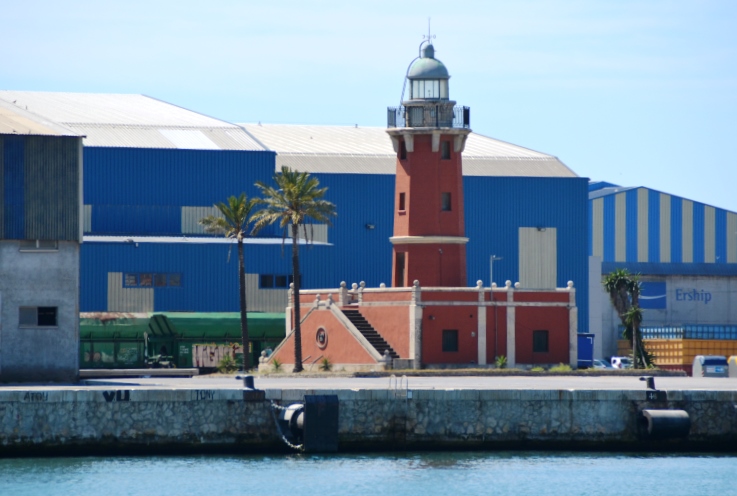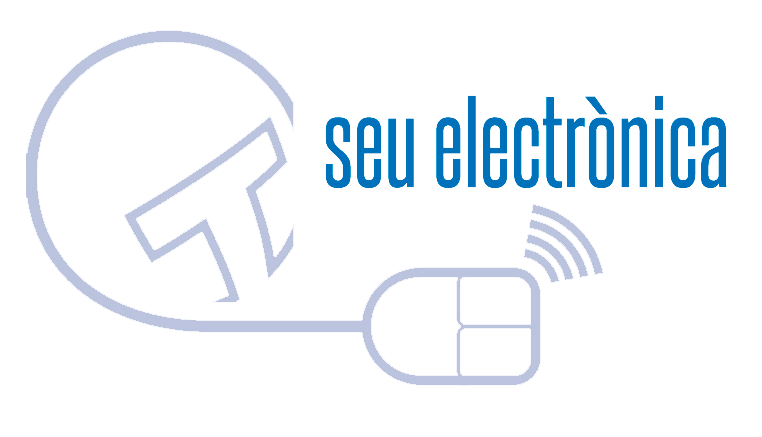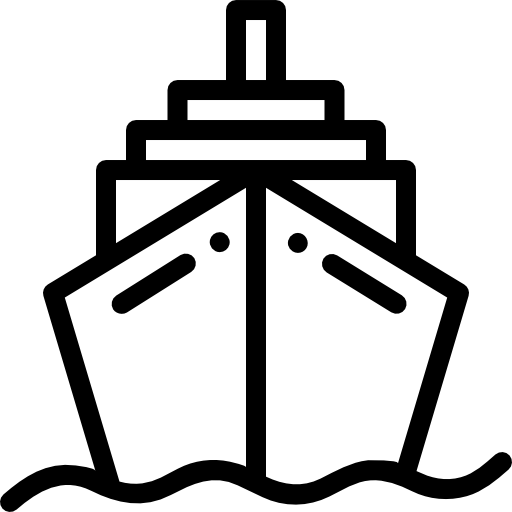ARAGON DOCK LIGHTHOUSE TARRAGONA PORT
HISTORY
The story of the lighting of the Port of Tarragona was, for more than a century, one of projects and temporary measures. The first project began on 23rd March 1791 and was carried out by the engineer Juan Ruiz de Apodaca. Ten years later Brigadier Smith offered another project that didn’t reach completion either.
Prior to the extension works on the port, it is known that before 1748 there existed a light for which a tax was levied established on 23rd December of that year by Royal Admiralty Duty, although at some stage it may have stopped working. From 1829 more reliable facts became available which speak of a temporary lighthouse with a white light, which was 79 feet high and was lit all year round.
After the service became nationalised, the first Lighting Plan laid out the plans for construction of a lighthouse at the port, with a third order device and a fixed white light that flashed every four minutes. As is already mentioned in the description of the Salou lighthouse, the extension work on the port impeded this construction and because of this it was decided to move it to that cape. Meanwhile, a lighthouse without optics but with ordinary oil lamps, which was lit on 1st August 1849.
Continuing the temporary situation another two plans are made in 1871 and 1876. The first, endorsed by the engineer Recaredo Ubagón, included a small building with the essential equipment for lighting provision but without any housing for the lighthouse keeper. The second, from the engineer Cardenal, was a building of larger expanse also including living quarters. Both were rejected because the works needed them to be mobile to enable them to be moved as the works progressed. The establishment of a blinking light suspended from a device that had a support with metal housing similar to that which had been put in the port of Barbate.
Finally, also as a temporary solution, a pyramidal tower made of wood was constructed. It was made of 4 mountings joined to each other by Saint Andrew crosses, at the apex of which was found a hexagonal lamp with flat glass panes, on a circular platform with an iron hand rail. At a height of 9 metres, it was painted pearl white and elevated the focal plane to 16.44 metres above sea level. It had a sixth order device purchased together with a lamp for a total price of 5,401.54 pesetas. It had a fixed red light, produced by a Maris lamp with a wick for paraffin and was looked after by a lighthouse keeper.
With the same arrangement but a new optic device equipped with screen and a clock movement, on the 1st December 1911 it used equidistant screens for the first time. In 1919 the tower’s stability was threatened by the rotting of its feet over time and reinforcement via new foundations was needed. Meanwhile, the Chief Engineer José Ruiz de Briones was reminded of the urgency of building a permanent lighthouse. This was designed by the engineer José Serrano Lloberes who presented it the same year, after modifications in line with prescriptions imposed upon him. The quote was for 69,782.73 pesetas to be paid by administration. It was approved by Royal Decree on 28th October 1920 and on the 7th May 1923 it was lit for the first time.
The lighting installation was made up of a cylindrical lamp with a diameter of 2.2 metres, a base with a container of mercury with a float, upon which were placed a set of rotating screens moved by a clock movement which was part of the same base bought from the Maquinista Valenciana. Dioptric drum optics, 500mm in diameter from the Chance Company, a 600 candle power “Nitra” filament bulb and an Aster petrol driven electric device, capable of administering 1.3kW. Its final appearance would be the same as the temporary lighthouse with equidistant screens and a 12 mile range.
As a result of the complaints and claims made by ship captains concerning the lack of definition that made easy identification of the lighthouse impossible, on the 15th December 1952 it was changed for an equidistant green flashing light. For this purpose a light filter and a set of signal lights were fitted, taking out the shutter screens and equipping it with an Aladin emergency lamp. A new Sonme electric device was also installed. The continuing extension works meant that it was gradually left behind. It was no longer appropriate for the green light to be used as these are employed to mark out extremes and the lighthouse could not do this. In 1978 it regained its old colour and now it is identified by groups of white signal lights that flash every 12 seconds. Two new Aga electric signal lights and a Ruston engine completed the installation.
With similar appearance to the one at the Castelló port, the lighthouse tower is 15 metres high, making the focal plane 18.10 metres from the sea and is founded on a reinforced base with tracks on the lower base of the Levante Dock, extending 9.5m further than the level of the upper section of the Levante Dock. It is made up of a group of quadrangular lenses upon which rises an octagonal pyramidal shaft finished with a sprung cornise supported by columns upon which rest the balcony, 2m diameter and 1.5m high observation deck and the lamp. The first, smaller floor of the two storey building is divided into two symmetrical parts. On the right are the lighthouse keeper’s living quarters, the left hand side is used by the port pilots. The lower level is made up of warehouses owned by the Committee. A double access stairway and a flight running alongside the main shaft of the building made up for the 3.6m gap that existed between the lower and first floors, giving access to a terrace that the entrance doors opened on to. There was also a direct access to the lighthouse from the keeper’s quarters to facilitate night time service. The building materials were basically concrete with Portland cement for the tower and masonry with cement mortar for the living quarters. The building costs were met by the Port Committee, whilst the lighting installation, the illumination chamber and the keepers’ staircase costs were met by the Maritime Signalling Central Service.
Because of the approaching dock and the powerful spotlights that masked it, the lighthouse was used less and less. On 16th August 1990 is was switched off and substituted by the old iron lighthouse situated on the Banya point, on the Alfaques peninsula (Ebro Delta) which was rebuilt and moved to the sheltered corner of the port no longer lending itself to maritime signalling. Since then the lighthouse building has been slowly deteriorating. First, the technician that looked after it moved to a house in the town and later the pilots moved to the new port control building, abandoning the lighthouse
Now in a bad state, it was partially demolished, keeping only the tower, the staircase and an annex. Keeping in mind that “the tower and the lamp make up an architectural set that would be worth renovating for their symbolic and historic value to the port”, on 5th November 1997 the engineer Ramón Juanola Subirana and the technical architect Ricardo Maldonado Bulnes presented a set of specifications that for a maximum of 20,000,000 pesetas set out the restoration of the tower, the lamp, the exterior staircase and existing annex and the building of a second symmetrical to the latter, floodlights and the planting of flowerbeds around the perimeter. In doing this its appearance would be substantially changed as the size of the building would be reduced, making it more harmonious.
The works were given to the ISTEM Company and also included the restoration of the old technical equipment of the lighthouse consisting of a Ruston diesel engine, the 1952 Sonme petrol engine, the AGA electric signal light and the old electric control panel.
To substitute the optics that had been moved from the old Banya lighthouse the Technical Centre for Maritime signals were requested to provide a 500mm diameter AGA horizon lens, made of polished glass, complimented by an incandescent 1000W spotlight which until 1995 had been used in the Salou lighthouse. The restored building was destined to house the old bar for the fisherman that had been demolished by the extension works on the Aragon Dock, keeping a small room aside to house the electrics and the signal lights. The restoration works and the relighting were inaugurated on 27th March 1999, this time as decoration and not as an aid to navigation. To avoid confusion amongst sailors a curtain blocks the light on the side facing the sea leaving it visible only to the interior of the port..
Old images
https://www.porttarragona.cat/en/notes-de-premsa-rss/item/1753-aragon-lighthouse#sigProIdb31920f2a4
Image Gallery
https://www.porttarragona.cat/en/notes-de-premsa-rss/item/1753-aragon-lighthouse#sigProId9d9540db09























